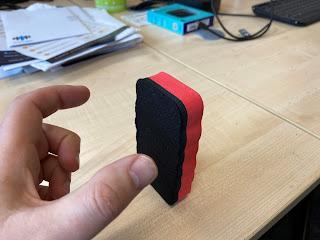This post is part of my current series where I am developing a research programme to formally connect affordances and motor abundance analyses (see the intro post here). The first thing I need is a task that has a formal affordance analysis; my chosen task is reaching-to-grasp (sometimes called prehension). I'm pivoting to this task from throwing for a few reasons. First, I need a simpler task. The logistics of data collection and analysis for throwing tasks are large and I just don't have the resources right now; I do have the kit for these studies. Second, I want to expand my own skill set to a new domain, and reach-to-grasp is another venerable topic. Finally, it means I get to spend time really grappling with other work by Geoff Bingham, who was my PhD supervisor and who remains the person who's work I admire the most.
This post is about the basic form of the reach-to-grasp movements studied in the lab, what some of the key measures are, and the fact these are sensitive to task demands (suggesting they are emerging from an active perception-action loop). In the next post I will work through the initial task analysis that leads us to candidate affordance properties.
Reach-to-Grasp Movements

- The trial begins with the fingers and thumbs together at a start location.
- We begin to reach; the hand starts to accelerate and the aperture between thumb and fingers begins to open. Unless there are obstacles, the hand takes a straight line path to the object, with a bell-shaped velocity profile.
- At some point, the hand reaches it's maximum speed (MS) and begins to decelerate for the approach to the object.
- At some point, the hand reaches it's maximum grip aperture (MGA). This is always larger than is required to enclose the object.
- As the hand moves to enclose the object, the speed drops to approximately zero and the hand aperture decreases slightly, down from the MGA but still larger than the object; this is the Terminal Grip Aperture (TGA).
- Finally, the fingers are placed on the object, which may then be lifted.
- The movement time, the peak speed, and when that peak speed occurs in the reach all depend on things like object distance.
- The scaling of the maximum and terminal grip apertures varies with object properties such as size, and also the timing of when these occur is affected by size.

